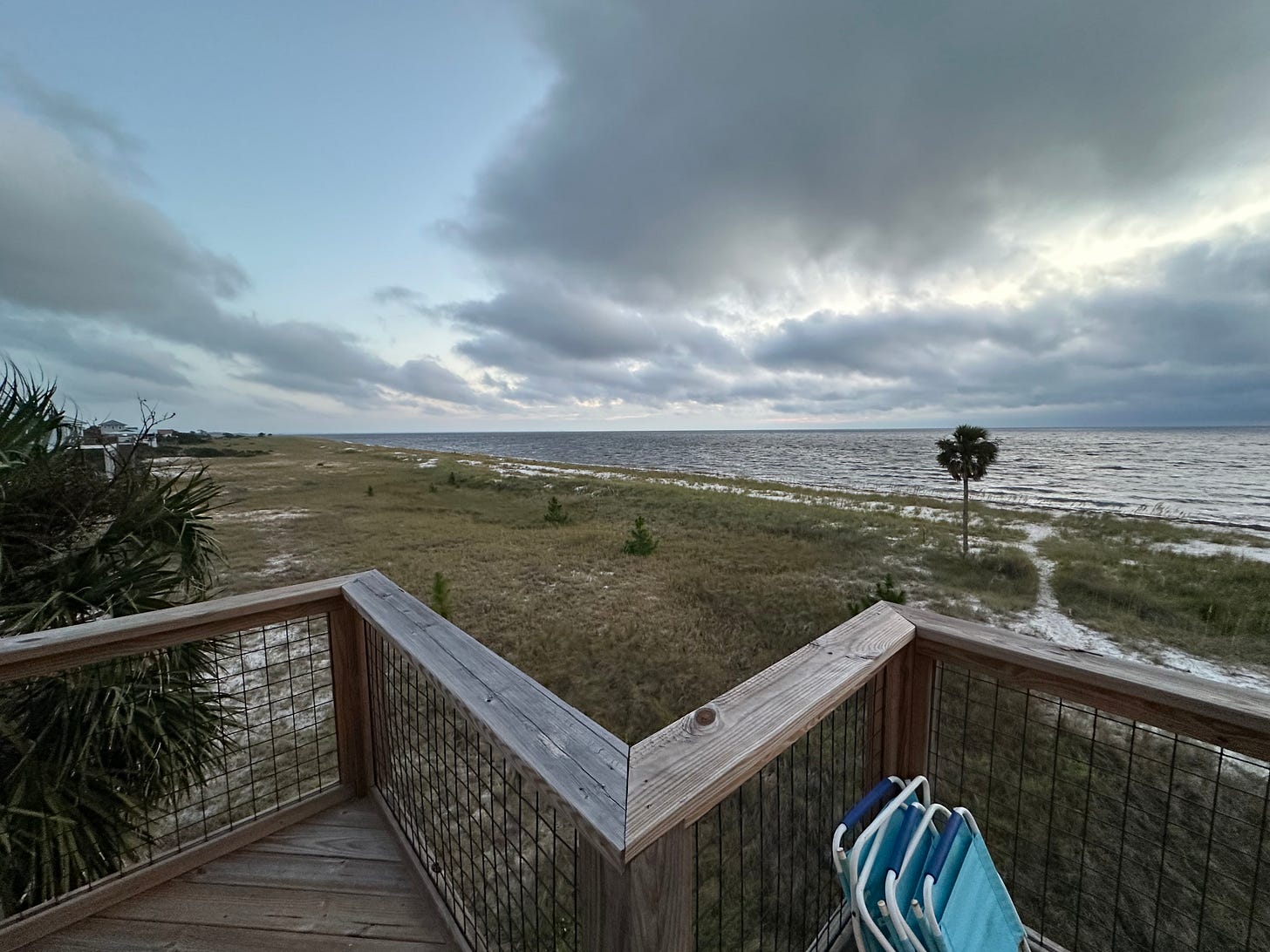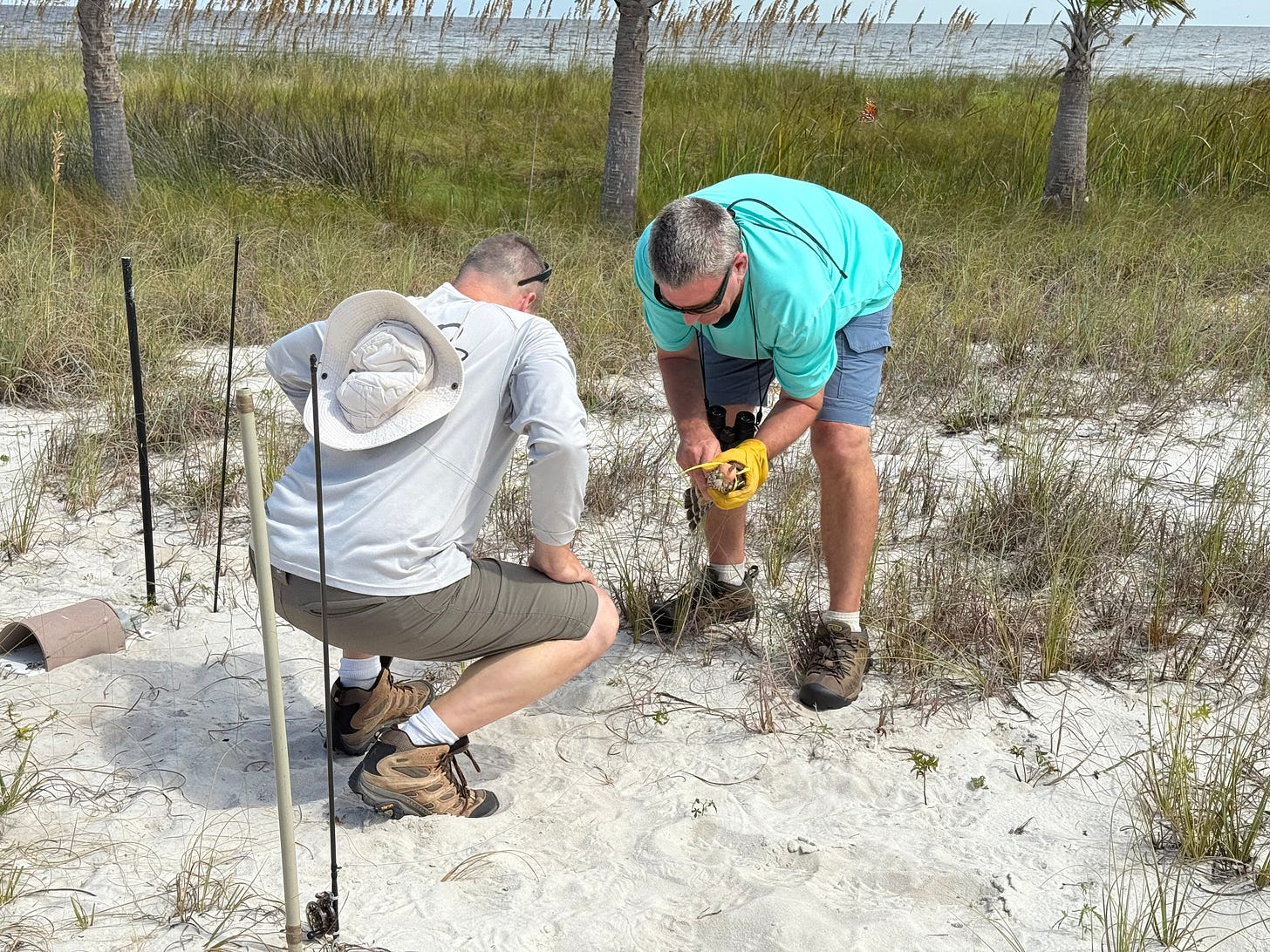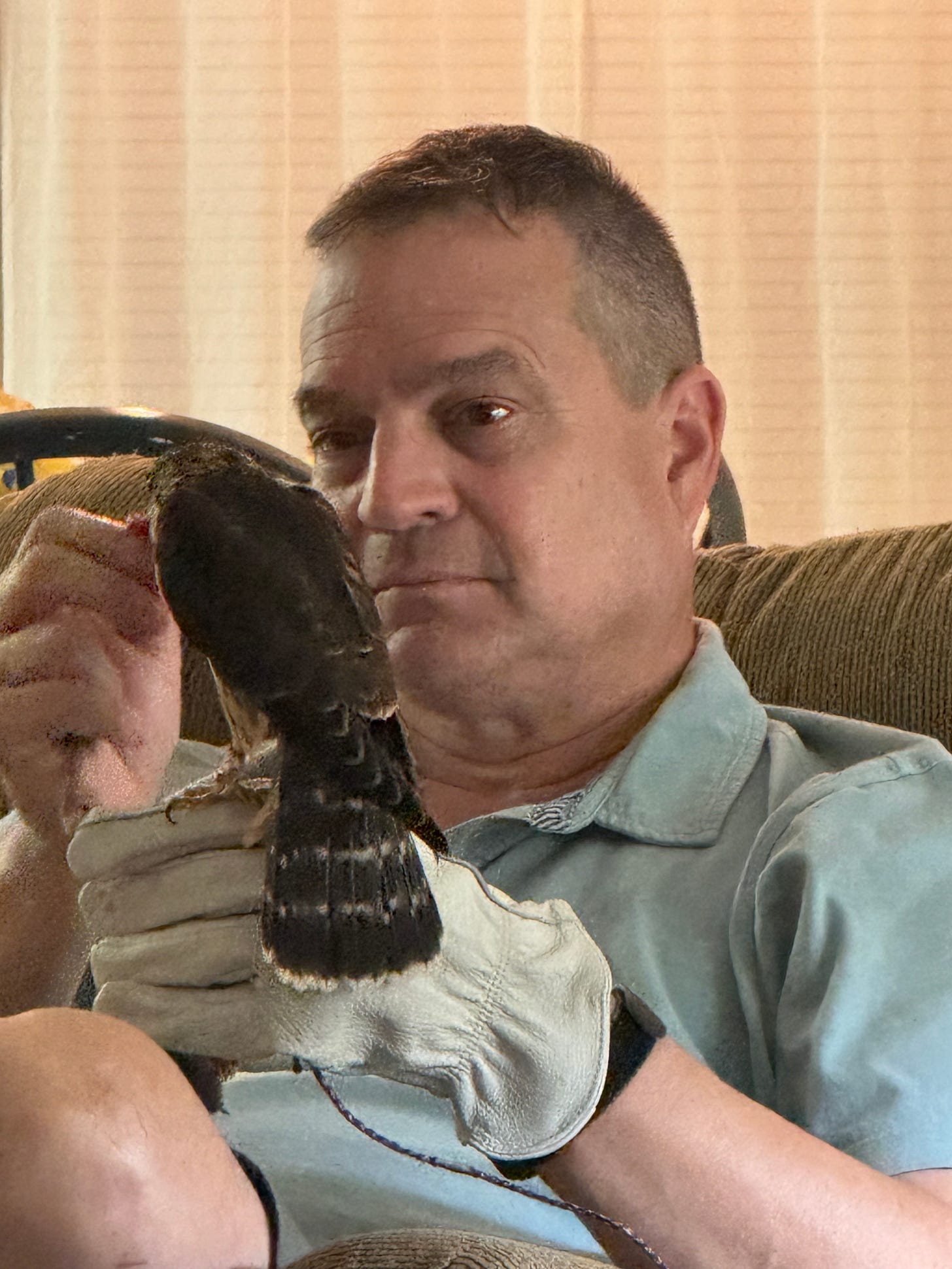If conditions changed as rapidly at home as they do here—the wind’s speed and direction, the shape and extent of cloud cover, the color of each full quarter of the visible world—we would all be alarmed.
Imagine if parking lots turned blue, then gray; or went from wavy to smooth every few minutes, rippling beneath the wind.
We would stay locked in our cars, belted in, unwilling to risk exit for home or office.
But out here, the mutable world is welcome. It rolls and shifts around us as we sit in folding chairs, legs crossed, actually enjoying it.
The sun stings then goes soft, blurred by a skein of cirrus clouds. The wind chills and falls still in turns; heat floats up from the sand to fill the void, but not for long.
Mornings call for sunscreen and a light jacket. The afternoons for shorts and a long-sleeve shirt. All day, you wear a hat with a chin strap.
This existential phasing makes it possible to imagine anything might happen next, which happens to be the best frame of mind for trapping falcons: Things change. Stay alert! Watch for what comes.
Each fall, hundreds of thousands of falcons pass this random point along Florida’s gulf coast, their pointy-winged shapes zipping by in three sizes—large, small, and smaller—along with equal numbers of harriers, hawks, and vultures, mixed in with local ospreys and marauding bald eagles.
Beneath and around them fly millions of migrating warblers and other passerines, and countless dragonflies, which together form the base of prey that sustain their larger predators.
This entire column of winged creatures flows south in September and October like an ephemeral river down the peninsula to Cuba, and across the equator into the next hemisphere.
Likewise, over in Texas, an annual bolus of predatory birds enjoins with others from the West Coast to line the skies above Mexico, Costa Rica, and Panama before dispersing into South America where they will spend, actually, most of their calendar year.
Fun fact: A fair percentage of our “native” raptors are arguably Latin American species that simply summer in the North—to court, raise broods, and go home.
This week at the beach, during each fall migration, we aim to lure some of their babies into nets and a life of temporary bondage. But it’s not as bad as that sounds.
Most wild birds (in fact, most things on Earth that breathe) die before the planet makes a full circle around the sun.
This is why hawks lay 3-5 eggs per pair each year, and raise as many as possible in their dozen-odd years of adult life: simply to replace themselves, once.
The year’s four seasons act like a sieve, filtering out the unfit and unlucky, so that fewer young hawks fly South than fledge the nest; fewer fledge than hatch; fewer hatch than are laid; and fewer return each Spring than leave in the Fall.
First-year mortality hovers around seventy percent, all in.
And yet, baring any number of anthropogenic threats (and sometimes despite them), most North American raptor populations remain robust.
Banning DDT and sport shooting in the 20th Century helped a bunch. More recently, some species have expanded into human spaces or moved north as winters warm, growing in total number even as most of their young (as ever) perish.
It’s merlins we’re after this week, prolific small falcons that have successfully colonized our city-scapes and cattle feedlots, dining well on house sparrows and starlings, and breeding in fir trees planted for wind breaks.
These are birds-of-the-year, browner and plainer in juvenile plumage than their parents. And more likely to die in transit, thus less likely to breed than any given adult bird.
So, they’re the perfect age to take and train, from a conservation standpoint.
They’re also ideal from a falconer’s perspective, being less set in their ways than the “haggards,” while benefiting more from a human’s help at hunting.
The wind shifts on the beach, and the birds respond.
A blustery morning brings rafts of warblers to brave the open spaces between bushes, gaining a few dozen yards with each flight. It’s like watching a platoon of new recruits advancing through enemy territory.
The lighter air of the afternoon will send them skyward, up to find handy crosswinds. Unfortunately, their pursuers will do the same.
Our merlin bumps early from the forest, having roosted tight against a pine trunk overnight. It beats into the wind, rocking slightly, racing between shoreline and surf, hungry for small birds.
A house sparrow wearing a tethered harness bounces near its hovel in the sand, dancing in front of our gossamer nets.
This is our set.
We’re like puppeteers, holding lines in each hand while trying to tell a compelling story. Our momentary audience of one, if sufficiently enthralled, will rush the stage and fall into its invisible curtain.
But there its story won’t end; it will blend.
Instead of keeping pace with its cohort in a perilous journey south, our merlin will stay roughly at the latitude it reached today. It will find the food and shelter it needs, not at the whim of the weather but on reliable schedule and in ample quantity to make it wonder, perhaps, what the hurry was all about.
Into this life, merlins have been drawn for millennia. Their forebears have lit upon gloved hands after flights at small birds across much of human history. Most that aren’t lost outright are released each spring.
Ours will be no different.
But the catch—pun unavoidable—goes both ways. What the merlin leaves at the beach, it also takes with it: its changeling nature. Its moods and the moody weather. Its connection to the wind and temperature and the time of day. To the lives of little perching birds.
And all these things are inexorably bound to you, also.
You cannot keep both the merlin and your stolid life of temperance, too. You are now as much beholden to the merlin’s world as it is to yours.






Congratulations. Good luck.
Congrats Matt. Wishing you a great season with both of your charges.